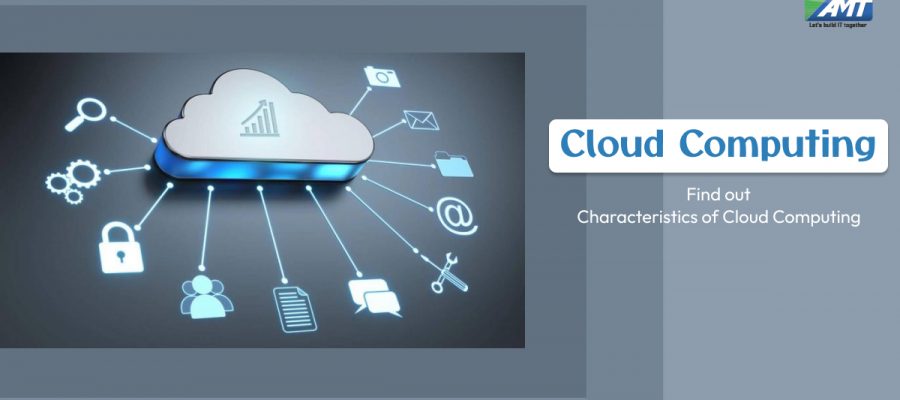Cloud computing is the on-demand availability of computer system resources, especially data storage and computing power, without direct active management by the user. The term is generally used to describe data centers available to many users over the Internet. Large clouds, predominant today, often have functions distributed over multiple locations from central servers. If the connection to the user is relatively close, it may be designated an edge server.
Clouds may be limited to a single organization (enterprise clouds), or be available to many organizations (public cloud).
Cloud computing relies on sharing of resources to achieve coherence and economies of scale.
Advocates of public and hybrid clouds note that cloud computing allows companies to avoid or minimize up-front IT infrastructure costs. Proponents also claim that cloud computing allows enterprises to get their applications up and running faster, with improved manageability and less maintenance, and that it enables IT teams to more rapidly adjust resources to meet fluctuating and unpredictable demand. Cloud providers typically use a “pay-as-you-go” model, which can lead to unexpected operating expenses if administrators are not familiarized with cloud-pricing models.
The availability of high-capacity networks, low-cost computers and storage devices as well as the widespread adoption of hardware virtualization, service-oriented architecture and autonomic and utility computing has led to growth in cloud computing. By 2019, Linux was the most widely used operating system, including in Microsoft’s offerings and is thus described as dominant. The Cloud Service Provider (CSP) will screen, keep up and gather data about the firewalls, intrusion identification or/and counteractive action frameworks and information stream inside the network.
Cloud computing exhibits the following key characteristics:
- Agility for organizations may be improved, as cloud computing may increase users’ flexibility with re-provisioning, adding, or expanding technological infrastructure resources.
- Cost reductions are claimed by cloud providers. A public-cloud delivery model converts capital expenditures (e.g., buying servers) to operational expenditure. This purportedly lowers barriers to entry, as infrastructure is typically provided by a third party and need not be purchased for one-time or infrequent intensive computing tasks. Pricing on a utility computing basis is “fine-grained”, with usage-based billing options. As well, less in-house IT skills are required for implementation of projects that use cloud computing. The e-FISCAL project’s state-of-the-art repository contains several articles looking into cost aspects in more detail, most of them concluding that costs savings depend on the type of activities supported and the type of infrastructure available in-house.
- Device and location independence enable users to access systems using a web browser regardless of their location or what device they use (e.g., PC, mobile phone). As infrastructure is off-site (typically provided by a third-party) and accessed via the Internet, users can connect to it from anywhere.
- Maintenance of cloud computing applications is easier, because they do not need to be installed on each user’s computer and can be accessed from different places (e.g., different work locations, while travelling, etc.).
- Performance is monitored by IT experts from the service provider, and consistent and loosely coupled architectures are constructed using web services as the system interface.
- Productivity may be increased when multiple users can work on the same data simultaneously, rather than waiting for it to be saved and emailed. Time may be saved as information does not need to be re-entered when fields are matched, nor do users need to install application software upgrades to their computer.
- Reliability improves with the use of multiple redundant sites, which makes well-designed cloud computing suitable for business continuity and disaster recovery.
- Scalability and elasticity via dynamic (“on-demand”) provisioning of resources on a fine-grained, self-service basis in near real-time (Note, the VM startup time varies by VM type, location, OS and cloud providers), without users having to engineer for peak loads. This gives the ability to scale up when the usage need increases or down if resources are not being used. Emerging approaches for managing elasticity include the utilization of machine learning techniques to propose efficient elasticity models.
- Security can improve due to centralization of data, increased security-focused resources, etc., but concerns can persist about loss of control over certain sensitive data, and the lack of security for stored kernels. Security is often as good as or better than other traditional systems, in part because service providers are able to devote resources to solving security issues that many customers cannot afford to tackle or which they lack the technical skills to address. However, the complexity of security is greatly increased when data is distributed over a wider area or over a greater number of devices, as well as in multi-tenant systems shared by unrelated users. In addition, user access to security audit logs may be difficult or impossible. Private cloud installations are in part motivated by users’ desire to retain control over the infrastructure and avoid losing control of information security.
The above is a brief about Cloud Computing. Watch this space for more updates on the latest trends in Technology.
